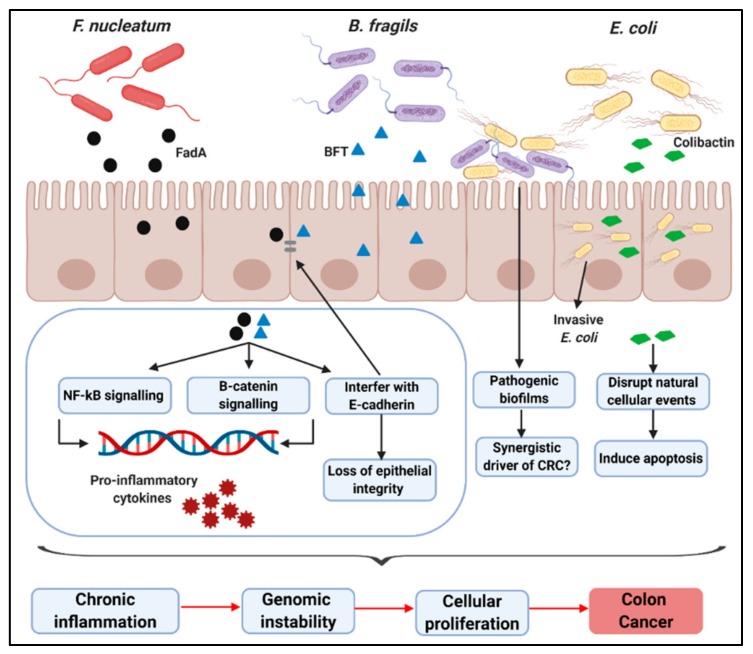Figure 1.
Overview of proposed mechanisms implicating principle CRC-associated bacterial pathogens in CRC development: Specific bacterial species may promote CRC through several mechanisms, such as the secretion of virulence factors by F. nucleatum (FadA) and B. fragilis (BFT), which activate NF-kB and β-catenin signaling pathways, leading to the development of pro-inflammatory cytokines which promotes pro-inflammatory microenvironments. Virulence factors may interfere with E-cadherin, a transmembrane protein essential for maintaining the epithelium cell layer, thus mediating the invasion of pathogenic bacteria. Cyclomodulin and genotoxin-producing E. coli (colibactin) may interfere with natural cellular events and may induce apoptosis. Biofilms predominantly colonized by genotoxin-producing E. coli and BFT-producing B. fragilis may be a synergistic driver of CRC. These events culminate in the development of chronic inflammation and genomic instability, which leads to epithelial cellular proliferation and, ultimately, CRC. This figure was created with BioRender.

